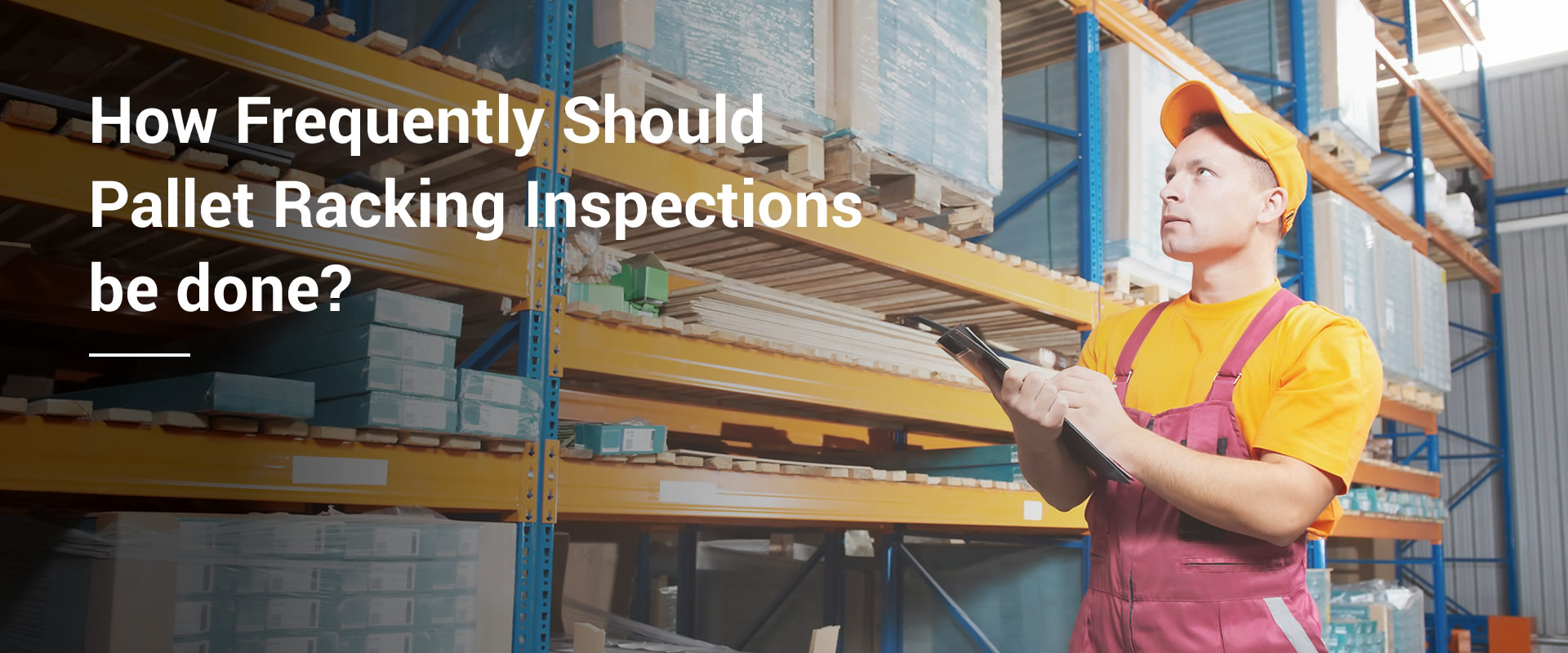-
11
Apr
How Frequently Should Pallet Racking Inspections be done?
To ensure that your warehouse storage space is a safe place to work, it’s important to keep your pallet racking in good shape through routine inspections. Not only is it highly recommended, it is also a legal requirement that needs to be followed.
Legal liabilities* can exist if you fail to do the following:
- Fail to do regular visual inspections (A weekly inspection by your “technically competent” staff can do the job)
- Fail to do an annual pallet racking inspection by a professional
- Fail to repair any damaged components
* Source: Plant Regulations under various State Occupational Health and Safety Acts
Now, the question is how frequently are pallet racking inspections required?
- Regular internal inspections need to be conducted weekly, bi-weekly or monthly depending on the amount of warehouse turnover and level of operational wear and tear; and
- Inspections performed by a professional independent racking inspector have required a maximum of every 12 months.
What needs to be checked?
✔ Check loading of Racks
Overloading can potentially cause serious damage and injuries. It is important to remember that each beam level and the overall bay has a load rating and you need to consider the age &/or state of the rack – it may not have the load capacity posted on it.
✔ Check the state of metal components
The metal components need to be checked for corrosion and/or rust as this is a sign that the metal is weak. If you have noticed any paint that has been scraped or scratched it usually indicates that there has been a collision and needs further investigation.
✔ Check if the racks are level
Warehouse pallet racking is subject to collisions which can affect set levels. Having a vertical leaning, a crooked rack or misaligned rows are areas that require urgent attention.
✔ Check uprights, bracing and footplates
Uprights that are bent or damaged may need replacing. It is necessary to check if the bracing has any deformities and see if the footplates are properly attached to the floor. It may be useful to look at column protectors for any damages.
✔ Check the load beams
Beams can also suffer damages due to impacts, uneven loading or overloading. It is necessary to check for any dents, twists, scrapes or bowing.
✔ Check the connections between beams and uprights
Connections need to be inspected to see if the beams are secured tightly to the uprights, for any broken welds or other signs of damage. The safety clips and bolts in the bolted system need to be tight.
It is important to take notes and document the findings of the pallet rack inspection and the priority of any repairs required. Documentation helps track down the regularity and thoroughness of the process.
The tips above are for information purposes only. It is advisable that a professional rack inspector is engaged to guarantee that your warehouse facility is safe for work and that the pallet racking is in good shape.
At One Stop Shelving, our Racking Inspection Team can help you comply with a range of OHS & E requirements and maintain your racking safety. We’ll work with you to identify and develop strategies to mitigate and reduce the overall risk to your business.
We will give you a detailed assessment of your racking and present strategies that will reduce those risks. Our assessments are conducted in accordance with Australian Standards AS4084-12, and our rack inspection team has over 50 years of combined experience in racking and warehouse solutions.
Ensure the safety of your team and the structural integrity of your racking – let us inspect your pallet racking and reduce the risk factor!
Call us on 03 8343 0000 or click on the link below.
